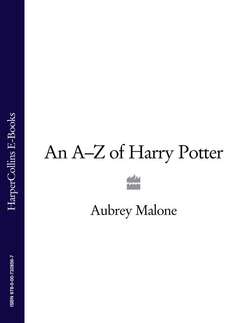Читать книгу An A–Z of Harry Potter - Aubrey Malone - Страница 12
Censorship
ОглавлениеIn some states in the US, Rowling’s books have been withdrawn from school libraries because they’re deemed to romanticise the gothic and condone occultism. Some of her denouncers have even accused her of being responsible for children browsing the net in search of Satanic cults. A lady called Carol Rockwood, the head teacher at a Church of England Primary School in Chatham, Kent, also banished Rowling’s books from her library in 2000 because she believed that the ‘devils, demons and witches are real and pose the same threat as, say, a child molester’. There’s even ‘The Organisation of People Against Potter’ (TOOPAP), and in Austria a Harry Potter ‘hate line’ where critics work through their grievances by phone.
Rowling’s own view is that we should censor the censors, not the books, which she sees as innocuous and therapeutic. She has never, she claims, met a child who wanted to be a witch or wizard after reading anything she wrote. ‘People find anything in a book if they wish,’ she claims.
The Christian overtones of the books can also be seen in details like the children going home from Hogwarts for Christmas and Easter holidays, though such matters are handled in secular fashion. The snake symbol of the evil Slytherin House is also a Christian one. In much the same way as J R R Tolkien and C S Lewis incorporated Christian concepts into fantasy literature, Rowling also has this subtext. Her work is really about moral choices, the ones we all face as we try to negotiate our way through grey areas. The fact that these issues are couched in mythical contexts does nothing to detract from their didactic nature.
What Rowling is basically saying is that we can be masters of our destiny even against apparently insuperable odds. If we think about boggarts, or the Mirror of Erised, what they share in common, despite superficial differences, is that we can influence what we see in the mirror, or what shape the boggart takes on. One encapsulates our desires and the other our fears. To this extent, they’re corollaries of each other. Harry learns to assert himself over his fate, and to this extent the books are actually old-fashioned. As Edmund Kern writes in The Wisdom of Harry Potter (Prometheus Books),‘If children reading the books grow up to be greedy consumers, intolerant chauvinists or dabblers in malevolent witchcraft, they will not do so because of what they read in Harry’s adventures.’
Neither does the violence in the novels lead to violence in the real world because it’s so obviously fantasy-driven. In the main what Rowling is writing are so many allegories of the primeval battle between good and evil.
In North Carolina some years ago, however, a young girl jumped off a kitchen table with a broomstick, imagining she would be able to fly after reading The Philosopher’s Stone. She wasn’t seriously injured but critics of Rowling use anecdotes like these as sticks to beat her with. Pursuing such an analogy would lead to calls to ban Superman comics for fear their readers would try to jump off buildings and fly as a result, or calls to censor C S Lewis’ Chronicles of Narnia because they feature astrology. Rowling has emphasised that her ambition was to make wizardry not fearful, but fun. She wanted to demythologise and domesticate an erstwhile eerie genre. She has, in effect, created Harry in Wonderland.
Her books encourage noble behaviour, and if Harry occasionally breaks rules or tells lies, that’s no reason to undermine Rowling’s overall ambition. She’s merely trying to make him into a three-dimensional character. Everyone, from Huckleberry Finn to Holden Caulfield, the narrator of The Catcher in the Rye, has in their way shunned convention to find their identity. Rowling isn’t condoning rebellion. She’s merely telling us we shouldn’t be sheep—especially if we live in a spider-infested cupboard at Number 4, Privet Drive.
